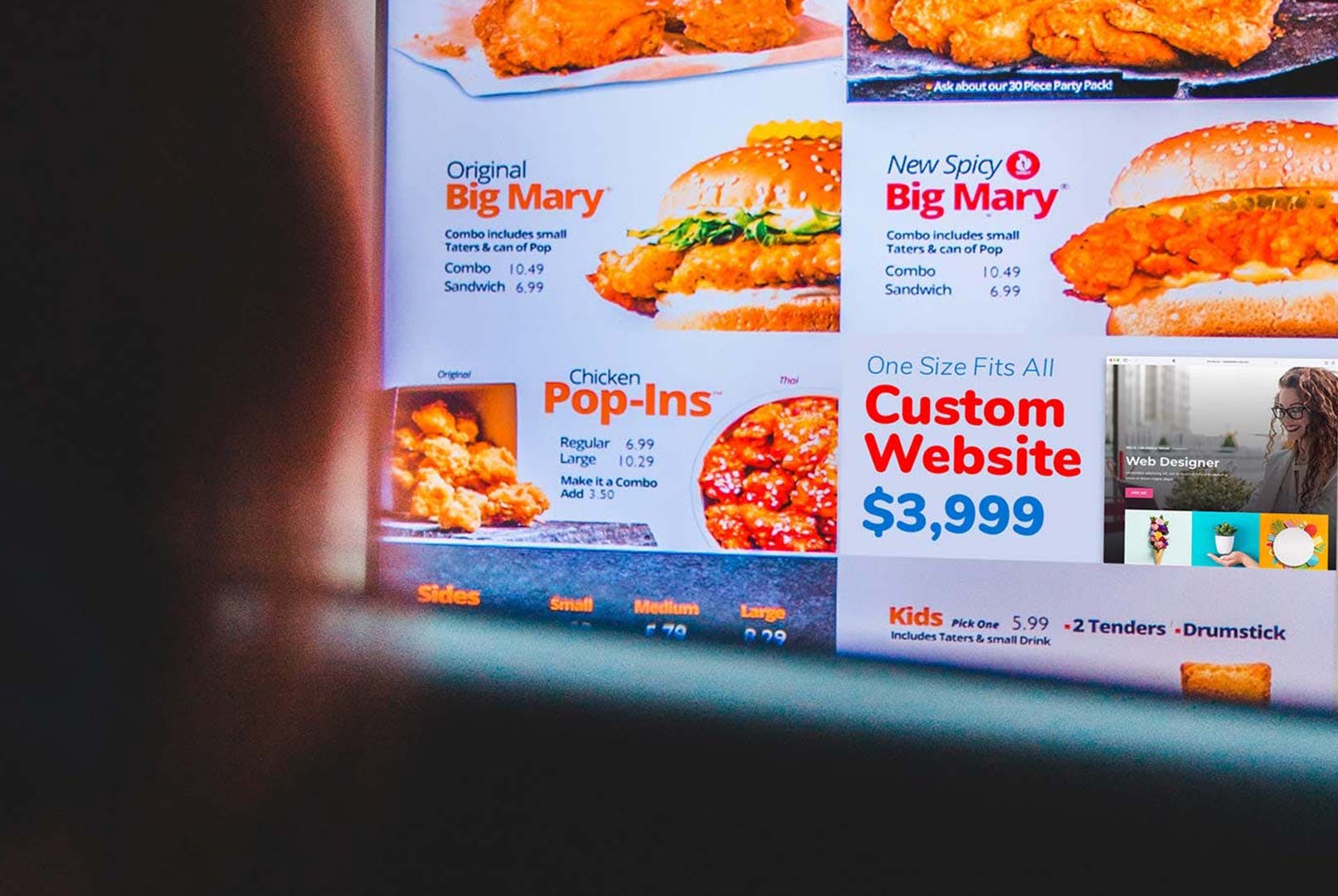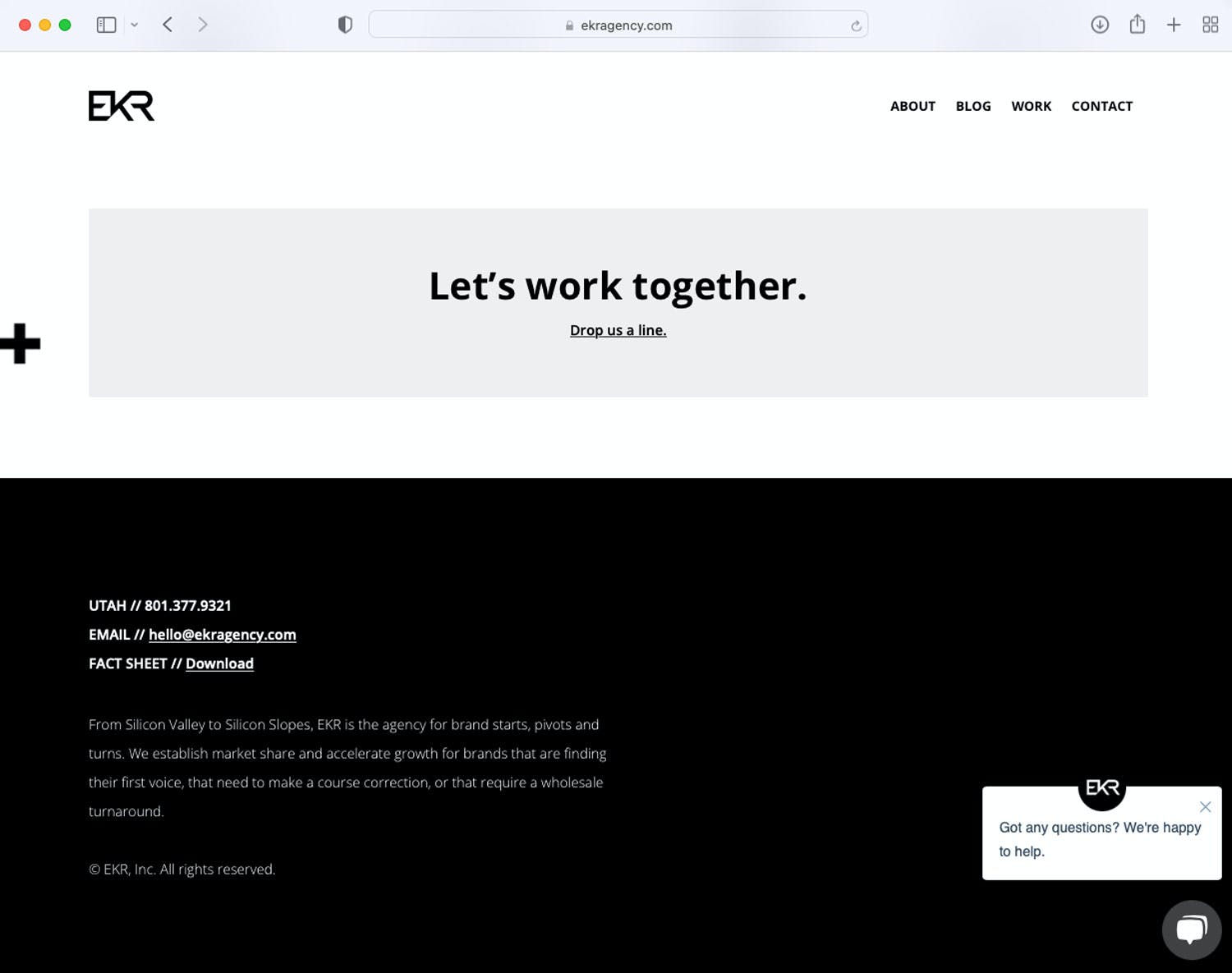In past content I’ve shared the reasons you SHOULD NOT share a price list for your creative business but I’ve never done it as clearly as I plan to in this article. So here we go!
Whenever I share something about the cons of sharing or posting a price list for your clients to see, inevitably some posts a comment wonder why it is a bad idea. I understand why you (the creative entrepreneur) would want to post a price list, it seems like an easy way to vet clients.
Imagine a world where a client comes to your website, they look at your price list, and then decide whether they want to buy from you or not. Think of all the time you will save not having discovery calls! You may never have to waste time selling a client in a face to face meeting again. sarcasm This approach isn’t a sales process, it is a fast food restaurant.

Original photo by Erik Mclean on Unsplash (Modified with “Custom Website” by Michael Janda)
Custom Solutions for Custom Businesses
Your clients aren’t buying templated hamburgers from a menu, they are buying a custom entree specific to their needs and desires at the time they purchase. You, as the chef, must take the time to understand their needs and make the perfect entree for them.
This is the big problem with a price list. Every business is a little different. They each have a slightly different target customer, business problem, and market position. Even when we think, “it is just the same as my other Acme Client,” it rarely is JUST THE SAME. There are nuances that need to be considered for your work to be successful.
When you post a price list it says to your potential clients, “Your business is just a cookie cutter and we have a cookie cutter solution that will work for you.”
Creative services must be sold differently than hamburgers.
Prices Lists Solicit Price Shoppers
The next big issue with posting a price list is that it solicits price shoppers. A potential client comes to your website, they look at your prices then read a few sentences about your services and what do they do next? They hit Google search and find another creative agency that does the exact same thing you do. The client checks your competitor’s price list and if it is even $1 cheaper, they will likely choose them WITHOUT EVERY CALLING YOU. Surely your sales process is strong enough to convince your client to spend $1 more to work with you than your competitor. Too bad you never even got the chance to talk with them.
When you post a price list, you are saying to your potential clients, “We compete on price,” which is the worst variable to compete on. The key to unlocking bigger budgets is to get your clients to spend more with you because you do BETTER work, not because you are the CHEAPEST option.
- A client will spend more to work with you because you have a faster turnaround time.
- A client will spend more to work with you because they believe you can deliver better results.
- A client will spend more with you because they believe that the project experience will go more smoothly.
- A client will spend more to work with you because they like you.
- A client will spend more to work with you because they trust you more than your competitors.
Convincing your client to buy from you based on these types of criteria opens the door to higher paying engagements.
People Buy Creative Services Based on Trust
The final thing I want to hammer home with regards to sharing a price list is the fact that most creative services are sold because the client TRUSTS the creative. They trust that you will do a good job on the project, that you will be nice to work with, and that you will have integrity in your business dealings.
Sure a client can become convinced of these critical things through your website, however, it is SO MUCH easier to help them see them through face to face interaction. If your potential client self selects out of the engagement before you get a chance to speak with them, you lose the chance to build a trusting relationship with them through your communication.
Post a Call to Action
Instead of a price list on your website, post a call to action. Your creative business website should include (at least) a brief overview about your business, a description of the services you offer (and how they help your clients), and case studies that provide proof of your capabilities. And somewhere, on each page, place a call to action.
“Let’s work together.” “We would love to discuss the needs of your business.” “Let us help your business grow.”
Follow that up with a link to your email or a SIMPLE online form.

Here Is Your Script for Price List Askers
The strategies I’ve provided you above will hopefully help dissuade you from posting a price list on your website. But what about the potential clients who ask you to send a price list to them? Here is how to respond to those people…
“Thanks for asking. We don’t have a price list. Every client’s business faces unique challenges. We take time to understand your custom needs and then provide you with a custom approach and price specifically tailored to help your business. When can we have a discovery meeting to discuss the needs of your business?”
What client wouldn’t want to hear that message? Their business is unique and you provide custom solutions. Custom work for custom clients, that’s the motto and that is the key to bigger budgets and better results.












